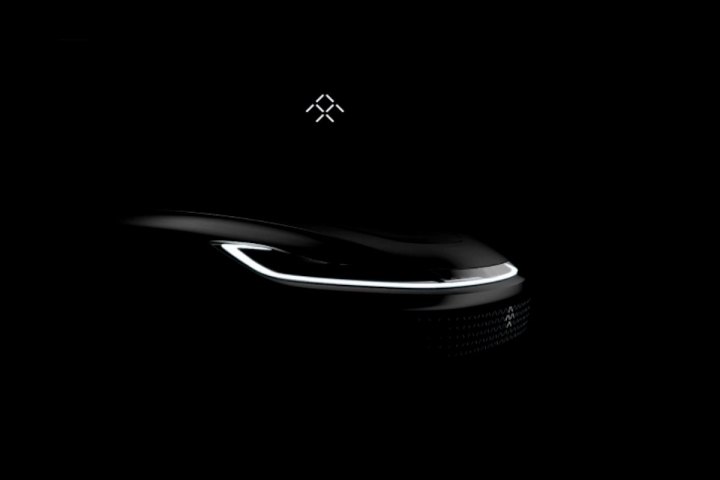
A pair of shadowy images highlight the front and rear ends of the vehicle. One photo posted to Twitter shows slim headlights connected by a horizontal light bar, just like on a 1980s Mercury Sable. A textured area below the headlights gives the impression of a grille, although, being electric, the car won’t have one.
A second photo, depicting the rear end, will likely drive plenty of speculation. The tiny appendage sticking out from the side of the car is too small to be a mirror, so it might be a camera that feeds a display inside the car. Several automakers, including Tesla, have tried to eliminate external mirrors because they create aerodynamic drag, but U.S. regulators have refused to allow it so far. Consequently, this may be a detail that does not make it to production.
It’s also unclear what the red and silver blob in the upper-right-hand corner of the roof is. One possibility is that it’s a sensor related to autonomous driving. Faraday has hinted that it wants to pursue self-driving cars, and those cars usually have some protruding bits, usually lidar units that help cars “see” the environment. This would be the most streamlined and unobtrusive lidar unit yet, though.
Faraday has revealed little else about its production car, which it plans to start building sometime around 2018. Previous teasers indicate that it will be some form of crossover, as they’ve shown a vehicle with a rear hatch and a tall body. The car will use lithium-ion battery cells from LG Chem, and the Variable Product Architecture (VPA) platform previewed by Faraday’s FFZero1 supercar concept from CES 2016.
The company still needs a place to build this car, though. Work on its factory site in North Las Vegas, Nevada, is at a standstill as Faraday negotiates with lead contractor AECOM. The contractor previously warned Faraday that it was late on payments for an escrow account covering associated costs. So far, Faraday has relied on Chinese billionaire Jia Yueting and his LeEco tech company, but LeEco is now experiencing its own financial issues, Jia said in a letter to employees last month.
Editors' Recommendations
- VinFast’s new electric cars will be available in the U.S. this year
- VW previews its next electric car in trippy camouflaged form
- BMW shows off an electric car with color-changing paint at CES 2022
- The future of transportation: Self-driving cars? Try self-driving everything
- Future cars: The best upcoming cars worth waiting for


